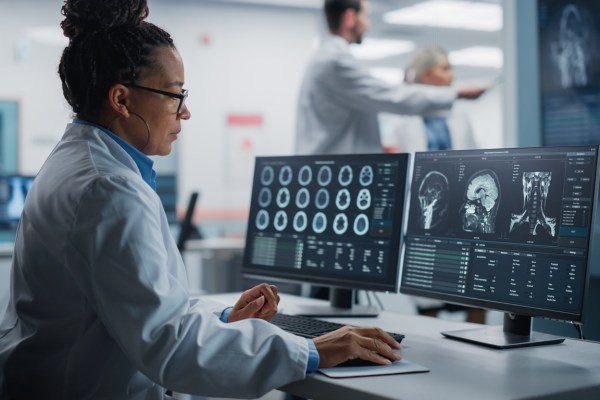November 19, 2024
A new HPI study found non-physician practitioners’ (NPPs) share of imaging interpretation in office-based practices increased 117%, from 2.52% of Medicare imaging studies in 2013 to 5.47% in 2022. Interpretations by NPPs are performed by a small minority of NPPs with considerable variation by imaging modality and state. Read More
October 22, 2024
According to new research from the Neiman Institute, radiologists who teach residents are spending significantly less time each year in that teaching role. The study, published in JACR, tracked the workload of 35,595 radiologists in Medicare Part B claims data from 2008 to 2020. Read More
October 3, 2024
The latest Harvey L. Neiman Health Policy Institute study found that neurointerventionalists, who often deliver lifesaving and disability-sparing treatments for emergency stroke cases, have essentially no financially viable access to payment recovery through the No Surprises Act for professional mechanical thrombectomy out-of-network claims. MT is an effective treatment for emergent large vessel occlusions, such as ischemic stroke. Read More
August 20, 2024
A new Harvey L. Neiman Health Policy Institute study found that living in a neighborhood with higher vulnerability to environmental heat predicted worse stroke severity. Investigators from HPI’s PRIME research center at Northwell Health, the largest health system in New York state, evaluated all acute ischemic stroke admissions to Northwell’s comprehensive stroke center over a decade. Read More
August 12, 2024
Given new breast density guidelines, now approximately one in two women are recommended to have supplemental breast cancer screening by breast MR or ultrasound due to their relatively higher breast cancer risk. Our latest research, published in the American Journal of Preventive Medicine, measured distance to the nearest facility offering mammography, breast MR and/or breast ultrasound for 29,629 ZIP codes. Read More
July 11, 2024
A new study by researchers from Mayo Clinic & the Neiman Institute demonstrates the impact on reimbursement of a value-based payment model, the Radiation Oncology Case Rate. A bipartisan bill introduced to Congress this May includes ROCR to protect access, reduce disparities and improve outcomes in cancer treatment. Read More
June 28, 2024
Reston, VA – A new Harvey L. Neiman Health Policy Institute study found that radiologists interpreted 72.1% of all imaging studies for Medicare fee-for-service beneficiaries in 2022, with the remaining 27.9% performed by other types of clinicians. Market share varied by imaging modality; radiologists interpreted 97.3% of computed tomography (CT), 91.0% of magnetic resonance (MR), 76.6% Read More
June 20, 2024
The Harvey L. Neiman Health Policy Institute announces the public launch of a new online tool that reveals the overlap between cancer disparities and social determinants of health using advanced heat maps of U.S. counties. The Cancer Equity Atlas can identify high-opportunity targets for policies and programs to achieve equitable health outcomes in underserved populations. Read More
June 5, 2024
A new Harvey L. Neiman Health Policy Institute study found that from 2014 to 2023 the number of medical practices with affiliated radiologists decreased 14.7% even though the number of radiologists increased 17.3%. As such, the average number of radiologists per practice increased from 9.7 to 17.9 over the study. Read More
April 26, 2024
A new Neiman Institute study found that physician reimbursement per Medicare patient decreased 2.3% between 2005 and 2021 when accounting for inflation, despite a concurrent increase of 45.5% in physician services to each patient. These reimbursement trends varied widely by physician specialty. Read More










